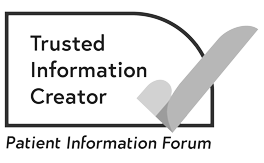Blood cancer
Choose a type
What is blood cancer?
Blood cancer happens when blood cells do not develop properly.
The most common blood cancers are:
But there are also other blood cancers called:
- myelodysplasia (MDS)
- myeloproliferative neoplasms (MPNs).
To understand blood cancers, it can help to know more about how the blood and blood cells work.
Different types of blood cancer affect different types of cells in the blood. We explain more about the types below.
Related pages
Leukaemia
Leukaemia (sometimes spelt as leukemia) is a cancer that develops when the body makes some abnormal blood cells.
The abnormal blood cells are called leukaemia cells. They behave differently from healthy blood cells.
There are different types of leukaemia depending on the type of blood cell affected. It also depends on whether the leukaemia is acute (faster growing) or chronic (slower growing).
The main types of leukaemia are:
Lymphoma
Lymphoma is a cancer that develops when white blood cells called lymphocytes become abnormal. These abnormal cells are called lymphoma cells. Over time, enough lymphoma cells develop to form a lump (tumour). The most common place for this to happen is in the lymph nodes. But lymphoma can start growing in other parts of the body.
There are 2 main types of lymphoma:
Myelodysplasia (MDS)
Myelodysplasia is also called myelodysplastic syndrome (MDS). MDS is a type of blood cancer that affects the bone marrow. In MDS, the bone marrow makes abnormal blood cells. These abnormal cells are called dysplastic cells. Dysplastic cells do not work and are quickly destroyed by the body. This means there are not enough blood cells in the blood.
Sometimes, MDS can develop into acute myeloid leukaemia (AML).
Myeloproliferative neoplasm (MPN)
Myeloproliferative neoplasms (MPNs) are also blood cancers.
They happen when the bone marrow makes too many of 1 or more type of blood cell. These cells all start from myeloid stem cells.
Most MPNs develop very slowly. Rarely, MPNs develop into an acute leukaemia.
There are 3 main types of MPN.
Essential thrombocythaemia (ET)
Essential thrombocythaemia (ET) is when the body makes too many blood-clotting cells. These are called platelets. Some people with ET have a higher risk of getting a blood clot (thrombosis). A very small number of people with ET may develop myelofibrosis.
Polycythaemia vera (PV)
Myelofibrosis (MF)
In people with myelofibrosis (MF), the bone marrow becomes scarred. This means it cannot make blood cells properly.
About our information
-
References
Below is a sample of the sources used in our blood cancer information. If you would like more information about the sources we use, please contact us at cancerinformationteam@macmillan.org.uk
Pan-London Haemato-Oncology Clinical Guidelines Acute Leukaemias and Myeloid Neoplasms Part 4: Myeloproliferative Neoplasms. January 2020. Available from www.rmpartners.nhs.uk/wp-content/uploads/2020/01/Pan-London-MPN-Guidelines-Jan-2020.pdf (accessed July 2022).
Pan-London Haemato-Oncology Clinical Guidelines Acute Leukaemias and Myeloid Neoplasms Part 5: Myelodysplastic Syndromes. Available from www.rmpartners.nhs.uk/wp-content/uploads/2020/01/Pan-London-MDS-Guideline-Jan-2020.pdf (accessed July 2022).
European Society for Medical Oncology (ESMO). Myelodysplastic Syndromes: ESMO Clinical Practice Guidelines for diagnosis, treatment and follow-up. 2020. Available from www.esmo.org/guidelines/guidelines-by-topic/haematological-malignancies/myelodysplastic-syndromes.
-
Reviewers
This information has been written, revised and edited by Macmillan Cancer Support’s Cancer Information Development team. It has been reviewed by expert medical and health professionals and people living with cancer. It has been approved by Senior Medical Editor, Dr Anne Parker, Consultant Haematologist.
Our cancer information has been awarded the PIF TICK. Created by the Patient Information Forum, this quality mark shows we meet PIF’s 10 criteria for trustworthy health information.
The language we use
We want everyone affected by cancer to feel our information is written for them.
We want our information to be as clear as possible. To do this, we try to:
- use plain English
- explain medical words
- use short sentences
- use illustrations to explain text
- structure the information clearly
- make sure important points are clear.
We use gender-inclusive language and talk to our readers as ‘you’ so that everyone feels included. Where clinically necessary we use the terms ‘men’ and ‘women’ or ‘male’ and ‘female’. For example, we do so when talking about parts of the body or mentioning statistics or research about who is affected.
You can read more about how we produce our information here.
Date reviewed

Our cancer information meets the PIF TICK quality mark.
This means it is easy to use, up-to-date and based on the latest evidence. Learn more about how we produce our information.



